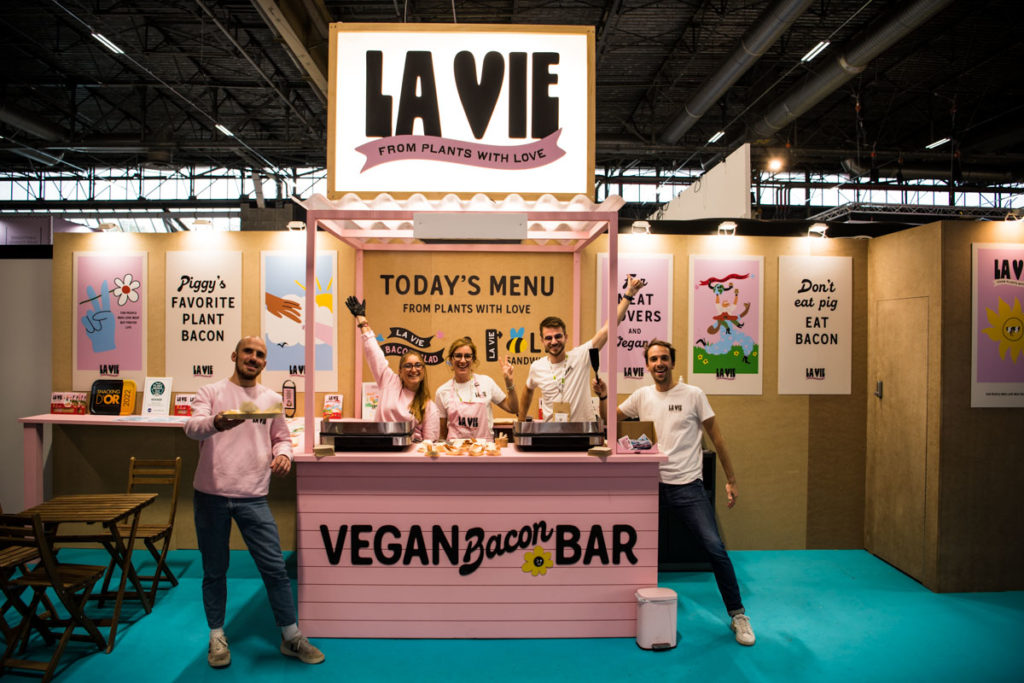The food sector is under stress. On the one hand, raw materials are subject to unprecedented supply variations (conflicts, geopolitical tensions, global warming), and on the other, consumers are being strangled by inflation. Distributors have tended to take products off the shelves. Manufacturers, for their part, started with shrinkflation and are now drastically limiting their innovations to cut costs. In times of crisis, it’s the variety that suffers. More than ever, it’s important to understand the major trends to make the right choices.
Contact IntoTheMinds for your consumer research
Food Innovations 2022: 7 statistics
- The number of new food products launched worldwide in 2022 has fallen by 12.7 %
- In France, the number of new food products launched in 2022 fell by 23%
- 10,2 %of food innovations in 2022 will involve non-alcoholic beverages
- 47 %of global food innovations focus on consumer pleasure
- 31,4 %of global food innovations are health-related
- Only 5.5% of food innovations in 2022 will focus on convenience
- 10,2 % of food innovations worldwide belong to the “non-alcoholic beverages” category (up 0.6 points in 2021)
At SIAL 2022, it was clear that plant-based foods in general, and plant-based meats in particular, were all the rage. But this particular case hid a more complex problem concerning food innovation. A research study published in June clearly shows that food professionals have significantly slowed the pace of innovation in 2022. The decline is significant: -12.7% between 2021 and 2022.
A heterogeneous slowdown
In France, the slowdown is particularly marked. In comparison, 3093 new products were counted in 2021, only 2374 in 2022 (-23%). The slowdown is particularly marked in Europe but less in Asia and the United States.
Nevertheless, this drop in the number of new products in the food sector is unprecedented in recent history. For 25 years, food has been a constant source of renewal. It was said that 10% of the world’s 30,000 annual innovations were showcased at SIAL once every 2 years.
Why the number of food innovations will decrease in 2022
There are many reasons for this slowdown, but they all have one cause in common: uncertainty. First, the Covid crisis, then the inflationary crisis, have put companies under financial strain. More than ever, companies are having to tighten their belts. This is necessary as not all cost increases have been passed on to customers. They must, therefore, be offset by internal cost reductions. Along with marketing, the R&D budget is among the first to suffer.
Innovative projects have been put on hold, waiting for hypothetical better days. This situation will remain the same, as explained in the following paragraph.

What does the future hold for food innovations?
Our analyses and the market research requests from our customers enable us to identify 3 trends for the coming years.
Dropout of non-essential innovations
Before 2022, it was estimated that 4 out of every 5 food products launched would only survive up to 12 months. In other words, the 1-year mortality rate for innovations in the food industry was 80%. Companies in this sector will concentrate their resources on those innovations that are most likely to succeed. Marginal” innovations will have less and less chance of seeing the light of day. As a result, consumer research will play an increasingly important role in the future. On the one hand, they will have to determine consumers’ real purchasing intentions, but they will also have to determine the revenue to be expected.
Priority to higher value-added products
Priority to higher value-added products
It follows logically that only innovations with high added value will be on supermarket shelves. This will enable manufacturers to defend their margins against distributors under pressure from the authorities. In France, for example, the government has once again summoned distributors to explain their failure to pass on price cuts agreed by manufacturers.
However, manufacturers must demonstrate that consumers perceive the added value of this strategy. From a methodological point of view, the market research exercise will have to rely on new measurement scales. These will have to link perceived added value to a strong intention to buy, particularly in taste. Making do with approximate or low purchase intentions will no longer be possible. The transition from intention to purchase must be certain once the product is on the market.
Fewer mid-range products
We also anticipate that food innovations will revolve around two opposing marketing positions:
- low-cost
- high-end
Products whose positioning is not anchored at either end of the spectrum will no longer see the light of day. As long as inflation persists (and this could last a decade), consumers will be forced to revise their eating habits downwards. The cheapest products will be preferred in most situations. Occasionally, an exception will be made, and consumers will allow themselves a better-quality branded product.
This means that mid-range products will gradually disappear from the food landscape. And what will become of private labels? Neither low-cost nor high-end, their poor positioning will be a handicap for years.
Gourmet pleasure with less expensive ingredients
The research results show that almost half (47%) of all food innovations fall into the “gustatory pleasure” category. This dominance of hedonism has been a constant for years if not decades. The trend is set to continue, but in the coming years, it will have to obey a new rule: “Do as well but with less .”This means manufacturers will try to maintain or increase taste pleasure while reducing recipe costs. Expensive ingredients must be substituted, and some recipes must be completely revised. This will give a lot of work to research institutes like Lenôtre, which will have to analyze the extent to which pleasure is preserved.
Conclusion
The pace of innovation in the food sector bears witness to its constraints. However, there needs to be more innovation. The players in this sector know that consumers want new products and that this is the only way to win market share. Indeed, the other approach – winning through more aggressive pricing – is not an option, as margins are already very thin. The only option would be to completely overhaul recipes so that less expensive products have a more advantageous price/pleasure ratio. But this in itself is an innovation.
Our firm and its teams are available if you’d like to pursue this thinking.
Posted in Innovation.


